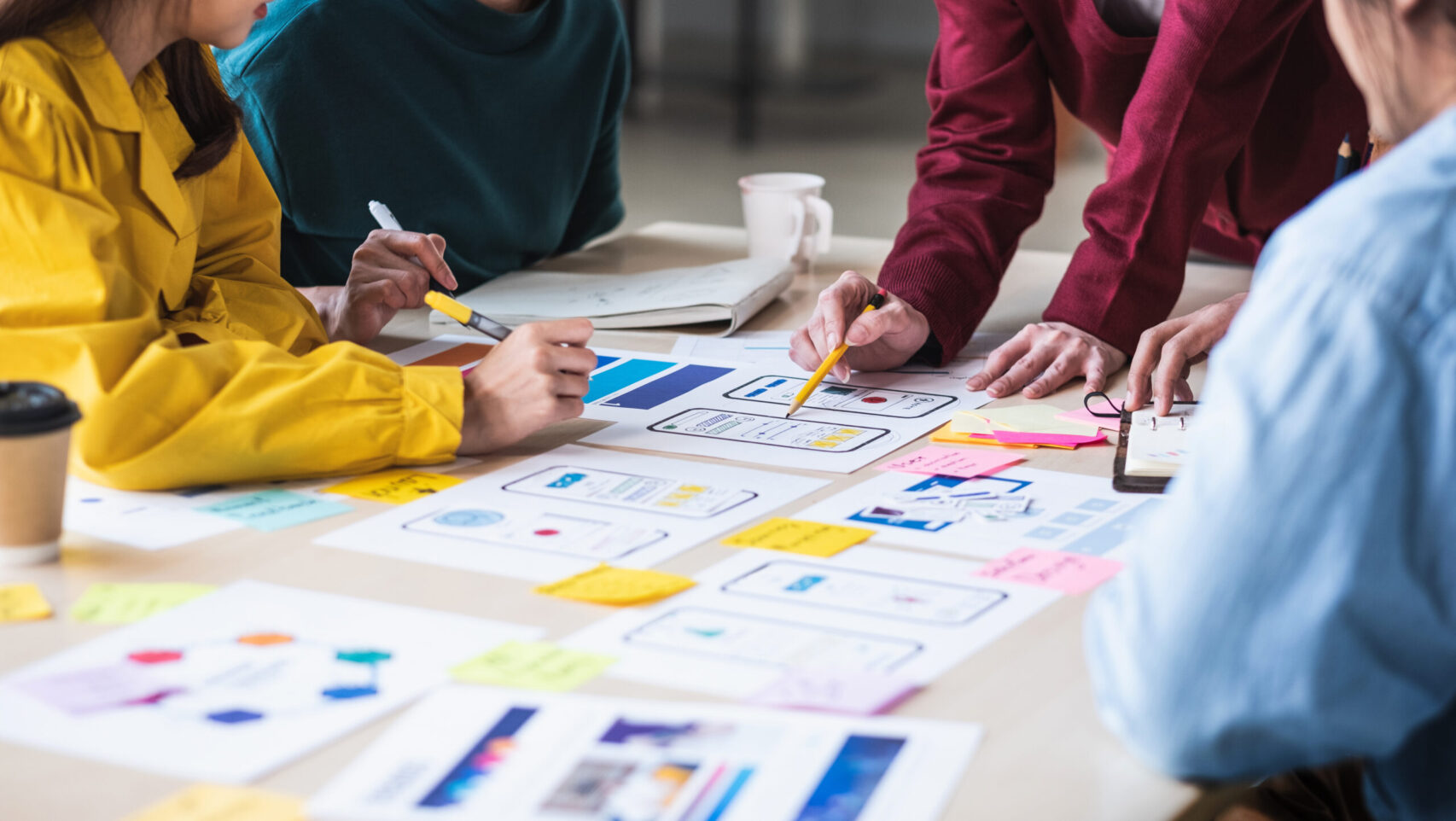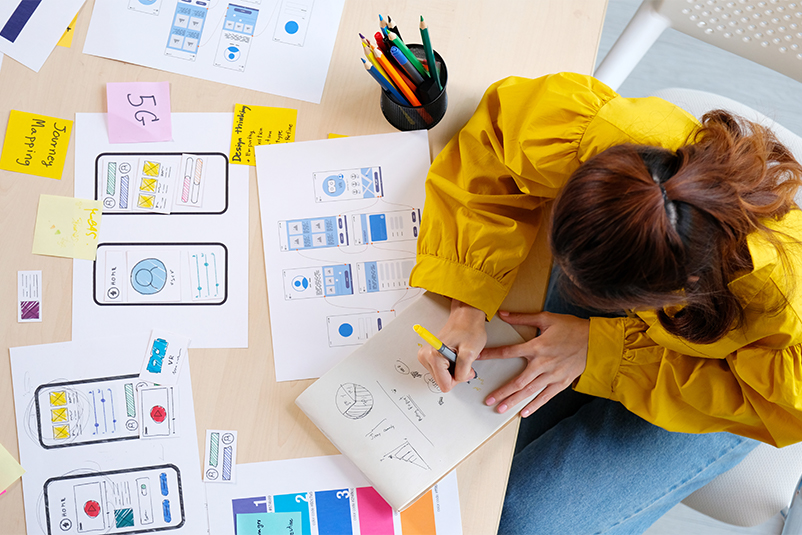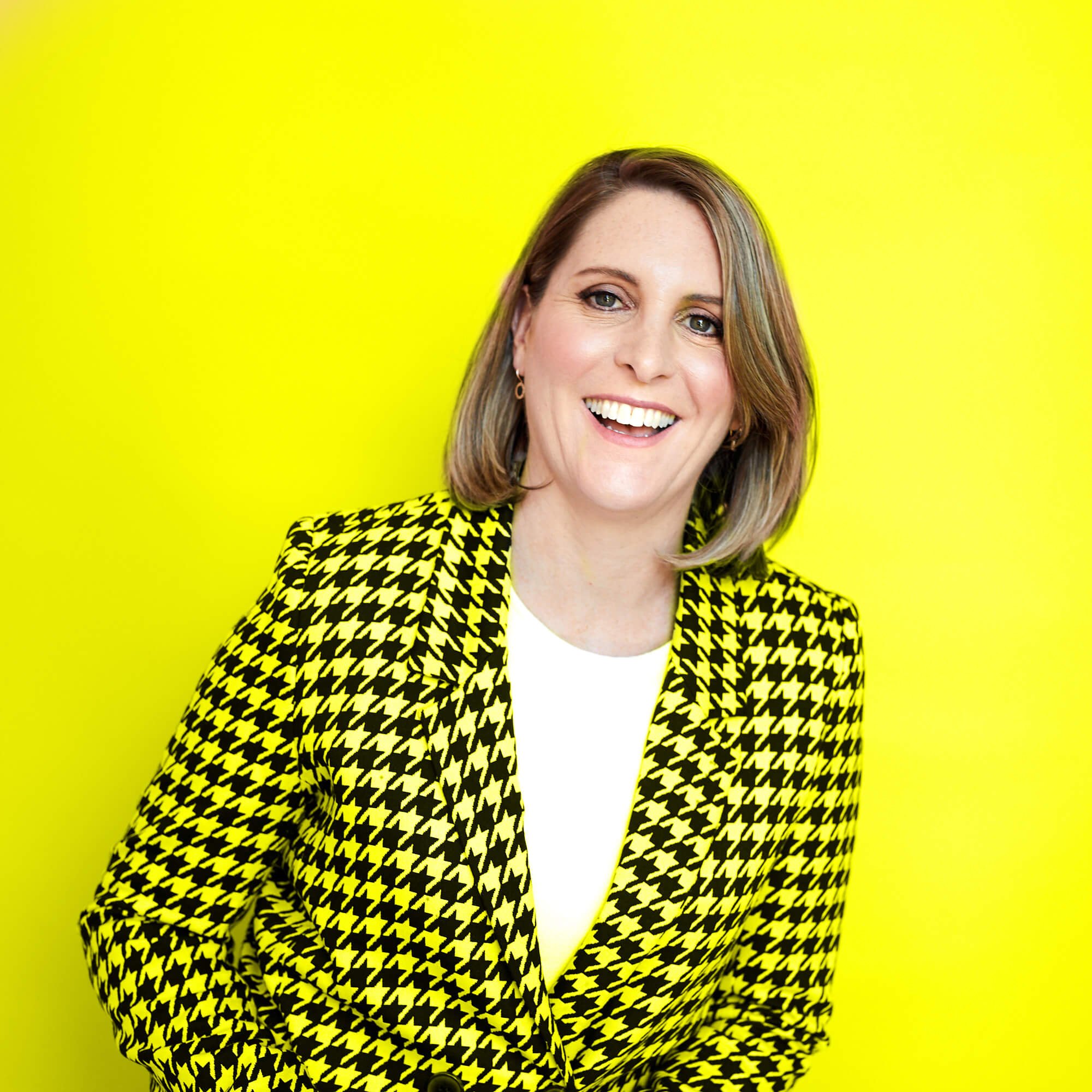We spend on average one-third of our lives at work; that’s a staggering 90,000 hours over your lifetime. Given that hefty dance card and considering we’re not living in the “Severance” era just yet (if you’ve not seen it, give it a Google, it’s great), it’s vital to invest in a role that provides fulfilment and career growth. So how do we land our dream job in UX? Kate Verran, Talent Specialist at Aquent, offers the UX design community a sprinkle of her well-seasoned strategies to help you successfully navigate your next career move to land your dream UX job.
What are the different roles and specialisations within UX?
UX / Experience Design
Within these roles, designers understand and advocate for users across the design of products, services and experiences. Designers work in the first and flex into the second stage of the Double Diamond, covering discovery, synthesis, and ideation, through to user flows or wireframes, and are involved in user testing. Some UXers also create prototypes and work on design iteration.
Researcher
Focused on the discovery phase, either mixed methods or focused on qualitative or quantitative research. Here we see an application of different research techniques dependent on the scenario: ethnographic, surveys, interviews, co-creation workshops with stakeholders, various teams, user groups etc. Outputs are usually a report or recommendations. Researchers usually collaborate closely with UX Designers.
Product Design
Tends to cover end-to-end UX > UI Design process. Sometimes from a UX perspective, focused more on the skeleton of an experience, but more often we see a PD skillset including strong UI Design capability, right through to micro-animations.
Content Design / UX Writing
No longer technical writing for product manuals, these days UX Writers and Content Designs sit on cross-functional Product / UX Design teams, looking at messaging, copy and content across the FULL end-to-end experience. Often stepping beyond just the product space, encompassing all channels (email, text, onsite messaging etc). Key focus areas include onboarding, upgrading or help and support services.
CX Design
Taking a Customer Centric viewpoint to design touchpoints across all channels. CX Designers work closely with sales and marketing on conversion metrics but also advocate for Voice of Customer across the whole lifecycle (pre-engagement, before sales, after-sales etc.)
Service Design / Strategic Design
Taking design thinking to the business itself – looking at the organisational structure, resources and approach to providing experiences – putting the customer/humans at the centre. Can be technical (digital transformation/systems migration etc), focused on Innovation and NPD (disruptors), or changing ways of working (e.g. a healthcare client moving from a clinician-driven approach to a customer-centric approach).
What qualities and skills do employers look for in UX candidates? How can candidates stand out from the competition?
No matter the role type or level, the ability to articulate your career story and highlight your key skills (being realistic about your stretch remits) will gain cut through when planning your next career move.
The critical skills to showcase are:
- UX design capabilities
- Problem-solving skills
- Cross-functional team collaboration
- Professional communication (stakeholders, non-designers etc).
It’s worth noting the attributes recruiters and employers look for are often dependent on the duration of engagement, as well as the role focus.
Skills for contractors
We are usually either looking to see very niche specialisation, skillset and level, or high adaptability and variety. The latter can be showcased via placements with a range of organisation types (in-house, consultancy, agency, startups/scale-ups etc.), working across various industry sectors, diverse types of projects, and an adaptable skillset, e.g., end-to-end skills, being able to showcase an ability to work from heavy discovery and research, through ideation and design, onto implementation and delivery.
Tip: Consider showcasing your projects that range across UX Design/Researcher, Product Designer and UX/UI Designer.
Skill for permanent roles
We are looking to see skills growth, reasonable tenure and ideally progression within organisations. Highlighting key skills/projects/experience that align with the role you’re applying for is key.
Tip: Providing context to the organisation, team and your role within it is recommended, as is highlighting a key achievement/success/learning for each role.
Work samples (case studies/project overview/portfolio)
- To make your UX case studies stand out, showcase recent work or key projects that best align with the work you want to get or the role you are applying for.
- Work samples should tell the story of the products, services and experiences you've been creating or the problems you've been working to solve.
- Be sure to highlight your role and your process, approach, and artefacts you created.
- Give context by including the cross-functional team you worked with or touch points across the business.
- Showcasing paid commercial studio work is always preferred, but supplementing this with self-initiated projects, volunteer work and course-related projects is fine. I've seen candidates working on enterprise sites successfully move into product design roles purely via self-initiated and personal freelance projects that supplemented their corporate-focused commercial work experience.
- Courses and certificates are great to show a continual learning mindset and are worth mentioning on LinkedIn and towards the end of your CV.
Are there any specific industry trends or technologies that UX designers should be familiar with?
Inclusive Design: An Inclusive Design approach is continuing to gain momentum, with accessibility considerations moving beyond WCAG standards. Although initially it may be motivated by the realisation that creating more accessible experiences taps into a larger market and expands customer reach, it is still so great to see accessibility starting to shift from ‘nice to have’ into a more essential consideration. A great resource to bookmark is Aquent Gymnasium’s free accessibility training collection.
Generative AI: On the tech side, there is lots of buzz around Generative AI and investigations into how and where it can be harnessed to support the design process (particularly from teams running lean due to downsizing). Also, robust discussions around the ethics and implications of adopting AI into Human Centred Design work.
Design Ethics: Not only for AI, but design in general. Dark patterns, persuasive design, behavioural science—with great power and insights comes great responsibility. Particularly looking into the addictive nature of digital products and services, social media etc. Lots of candidates want to focus on Design For Good by creating solutions that help people, such as products that improve financial literacy or save money with automated round-ups. I saw a brilliant talk recently regarding ABC Kids setting limits on the auto-play functionality.
Positive Social Impact: I’m consistently hearing from candidates about a desire to work with organisations and on projects that have a positive benefit to society, promote equality or support vulnerable communities.
Life Centred Design/Circular Economy Design frameworks; Design Futures and Speculative Design approach: Lots of candidates looking into ways they can bring a more holistic approach to the products/services/experiences they are creating.
What advice do you have for people looking to take the next step in the UX?
Build your personal brand: Define/refine your profile and how you present yourself on LinkedIn and across your support documents like CV, folio site, case studies, etc.
Connect with the design community: There are lots of meetups and events (in person and virtual) you can attend to start building both your network and knowledge.
Follow organisations and design thought leaders you aspire to on LinkedIn, this will pull their content into your feed so you see when and what they post.
Build your experience: Take part in hackathons or volunteer for an NFP to build experience if you aren’t yet working commercially (or if you are working and you want to give back)
Check out online courses to foster a growth mindset – Google, Interaction Design Foundation, and LinkedIn all offer online courses. Aquent also offer free online courses via our Aquent Gymnasium platform.
Check out mentors on ADPList, particularly if you are wanting to work within a niche focus area; mentors may be able to provide insights into their journey and help with recommendations for you.
Be patient: Landing your first UX role can take time, and you may not get your dream role right away. Keep in mind that we see lots of non-linear career paths, so taking a role/contract that provides you with the opportunities to build expertise that can supplement your skill set is fine.
It’s not every day we get the opportunity to tap into the wisdom of a UX talent specialist, so big thanks to Kate for her sage and practical advice!
To all those in the UXA community looking to make the next move, remember the field of UX holds so many opportunities, so stay curious, remain adaptable, and here’s to making the next 60,000 hours of your career meaningful!
This article was originally posted on UX Australia blog.
Latest.

AI adoption failing isn’t the tech, it’s the people. How smart businesses overcome this.
Technology, Thought Leadership, Industry Trends

Temp-to-perm is the best way to hire today.
Hiring Insights

How to keep top talent: Strategies for successful onboarding
Hiring Insights, Ask Aquent, Training Resources




